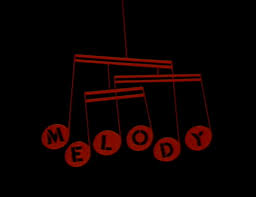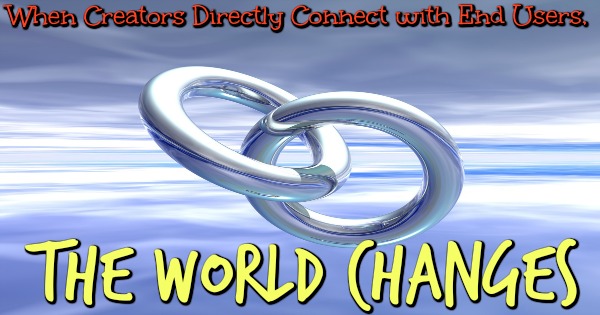Song Kinetics
WHAT ARE THE KINETICS OF YOUR SONG?
Hey y’all, meet Brent Baxter.  He will be guest blogging in my absence this week as I am hanging with my family in  Utah’s amazing Zion National Park.  Songwriters this is a must read.
<Brent Baxter is a hit songwriter with cuts by Alan Jackson (the top 5 hit “Monday Morning Church,†Lady Antebellum, Randy Travis, Joe Nichols, Gord Bamford (the #1 Canadian country hit, “When Your Lips Are So Closeâ€), comedy legend Ray Stevens, Rock ‘n Roll Hall of Fame member Steve Cropper, and more. He blogs about songwriting and the music business at Man vs. Row, manvsrow.com.>
I call the energy of a song the “kinetics.â€Â Kinetic energy is energy in motion, as opposed to potential energy, which is energy at rest. There are three components of a song’s kinetic energy: 1) tempo 2) melody and 3) phrasing. Let’s take a look at each of these elements.
Tempo
Tempo is the speed of your song in beats per minute, or bpm. As a general principle, uptempo songs are in higher demand than midtempo or ballads. Therefore, your best bet to get a cut is by writing great uptempo songs. The math everywhere supports this.
everywhere supports this.
Look at the albums by the top artists. Most of their songs are mid- and uptempo. There’s usually only one or two true ballads on most albums these days.
Radio mostly plays uptempo and midtempo. They want the listeners to feel good and stick around through the commercials.
And, finally, artists want their shows to be fun- they want the crowd on their feet, singing along and having a great time so they buy a T-shirt at the merch table. An artist works hard to get everybody on their feet at a show. Then he plays a ballad. What does everyone do? They sit back down. Now the artist has to work hard to get them on their feet again. Because of this, most artists don’t play many ballads in their shows.
Shows, radio, and records all rely on tempo. Therefore, it’s wise give your song, if possible, in a faster tempo.
Here’s another reason to lean toward writing tempo. A lot of people listen “beat first.â€Â This means they don’t pay attention to the lyrics of the song at first. They listen for a good beat first. Then, if they like the beat, they MIGHT get around to connecting with the lyric.
Your song might have a great idea and a powerful lyric, but “beat first†listeners will likely never know. Writing songs with a good beat and a good lyric helps your song connect faster to both beat-first and lyric-first listeners.
Melody
I’m a lyricist, and I don’t write melodies. I leave that to folks who are great at that. However, I know from experience  and observation that MELODY MATTERS. It’s huge.
and observation that MELODY MATTERS. It’s huge.
Let me be clear- a song with a great melody and average lyric will get cut a lot faster than a song with a great lyric and an average melody.
Your melody has to fit your idea, simple as that. This is not to say that sad songs HAVE to have “sad†melodies (I’ll touch on that later), but if your lyric is angry, your melody probably shouldn’t be too “sweet.â€Â Likewise, if your idea is for a tough guy, the melody should be one that a tough-guy artist would sing.
In general, if your song has a slower tempo, it probably needs to have a bigger, more rangy melody. There just aren’t many slow songs with soft melodies getting cut these days. You put your song at a disadvantage when you frame it that way.
If you’re going to go ballad, go big.
A good example of this is “I Drive Your Truck,†written by Jessi Alexander, Connie Harrington, and Jimmy Yeary and recorded by Lee Brice. It’s a sad ballad. But it doesn’t FEEL like a ballad because of the power in the chorus. Lee just sings his backside off.
If they hadn’t CHOSEN to go the power ballad route, I don’t think the song would have worked as well- and I definitely don’t think it would’ve been a #1 hit country single. If the tempo had been too fast, it might have trivialized the subject matter. If they had given it a soft, flat melody, I think the singer would’ve come across too whiney.
Again, if you go ballad, go big.
Phrasing
Phrasing is the rhythm of the lyrics as they fit into the melody. You could say it’s the “bounce†of the words. Phrasing could be melodic and slow, like the chorus on “Drink A Beer†recorded by Luke Bryan and written by Chris Stapleton and Jim Beavers. It could be more like a rap, like the verses of “Boys ‘Round Here†recorded by Blake Shelton and written by Craig Wiseman, Thomas Rhett, and Dallas Davidson. Or it could be somewhere in between.
Stapleton and Jim Beavers. It could be more like a rap, like the verses of “Boys ‘Round Here†recorded by Blake Shelton and written by Craig Wiseman, Thomas Rhett, and Dallas Davidson. Or it could be somewhere in between.
Play with your phrasing. Mix it up. If you’re not great at writing uptempo songs, try writing faster, more interesting phrasing. Brantley Gilbert and Colt Ford did this well when they wrote “Dirt Road Anthem,†which went on to become a #1 country single for Jason Aldean. The tempo wasn’t that fast- the song felt really laid back. It’s the rapid-fire phrasing on the verses which really gives the song its energy (instead of giving it a power chorus or a fast tempo).
You don’t want your lyric to have the same “bounce†all the way through. Mix up the phrasing between your verse and your chorus. This will help you vary the melody between the verse and chorus, too. That’s really important.
Right now, rap-like lyrics are pretty popular in country music, but who knows how long that’ll be the case. My best advice is to just keep it interesting, whatever you do.
IN CONCLUSION
Let’s take a look at “These Days†recorded by Rascal Flatts and written by Jeffery Steele, Steve Robson and Danny Wells. The idea of the song is that this guy runs into his old flame and they start catching up.
He basically says, “I wake up, think of you, cry and hope all day that you’ll call. Then I go back to bed and dream of you. That’s what I’m doing these days.â€
What a whiner!
But those hit writers knew they could not only get away with, but GET A HIT with that bellyaching lyric by giving it some tempo, a big chorus and interesting phrasing. It’s a classic case of “It’s not what you say, it’s how you say it.â€
Let’s learn from this!
God Bless,
Brent Baxter
If you like  this post, please SHARE it and/or LEAVE A COMMENT.  Thank  you!
[ois skin=”Bottom Post”]












Tell Us Your Comments
Leave a Reply
Want to join the discussion?Feel free to contribute!